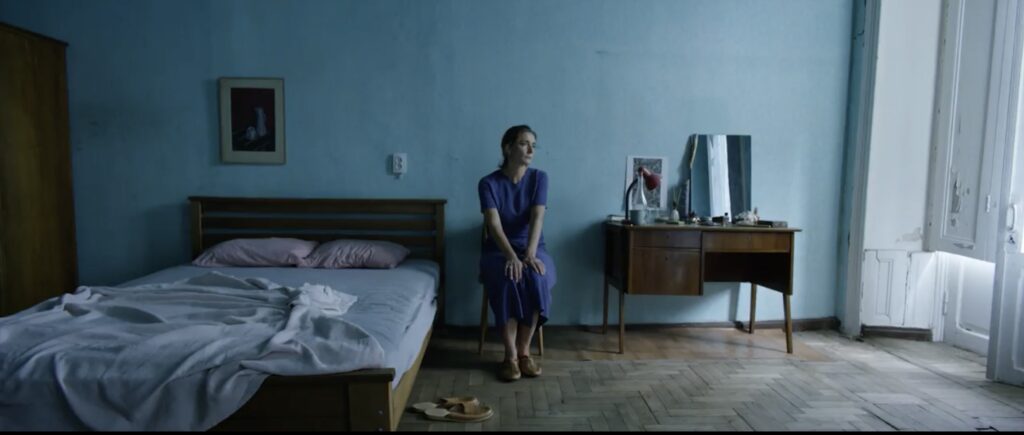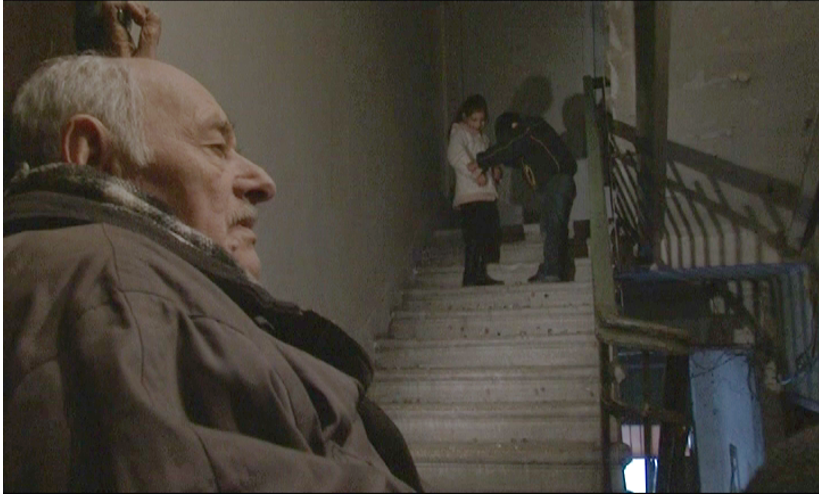The famous American writer Stephen King wrote in his 1982 short story, "The Body:" "“The most important things are the hardest to say. They are the things you get ashamed of, because words diminish them - words shrink things that seemed limitless when they were in your head to no more than living size when they're brought out." Stephen King's mentioned quote can be connected to the nature of cinema as a medium. The valuable aspect of cinema is that it allows people to visually express their own feelings and experiences, things that words would otherwise obscure. In cinema, directors often resort to visualizing their own traumas or inner, psychological states hidden from the eye, especially by using the language of symbols to achieve this goal.
Irine Rurua’s short student film “Such A Long Absence” (2022) is no exception in this regard, in which verbal expression is not only minimal, but also completely absent. The work does not have a clear traditional narrative, and although it is true that all the scenes that the viewer sees are part of familiar real life, the silence, minimalism, and slight disruption of the narrative linearity that prevails throughout the film still give the viewer the feeling that sharing a few minutes of the heroine’s life locked in blue rooms, played by Sofiko Gagua, serves as a visual illustration of the character’s sadness and loneliness.
There is no speech, dialogue, monologue or voice-over involved in this film. This factor and the entire isolated atmosphere of the film, in which the blue color associated with sadness and melancholy dominates, still leaves the viewer with hints about the spiritual crisis and doubling of the main character, which, again and again, the director expresses with the help of symbols. One such symbol is the mirror, which has been used with this load by many directors in the history of cinema. For example, Ingmar Bergman, Akira Kurosawa, Rainer Werner Fassbinder, Andrei Tarkovsky, Darren Aronofsky, Stanley Kubrick, David Lynch, Luis Buñuel, Jean Cocteau, Alfred Hitchcock, and therefore, as a rule, mainly in cinema art, the mirror has become a symbol of human identity. It has become a symbol of crisis and duality. In this regard, there is nothing new in Irine Rurua’s film, although in this case an interesting visual solution for using the aforementioned symbol was proposed by the cinematographer Vasil Dolidze, who built the work mainly on strict static compositional shots of a painterly nature.
We can see the main character’s image reflected in mirrors at the beginning and the end of the film - in one mirror only the character’s head, and in the other - the body, which is an easily understandable hint about the character’s split identity, which is never resolved. Since the main character’s spiritual crisis, loneliness and isolation are transmitted to the viewer by the entire mood and atmosphere of the film, it is so difficult to understand the specific reason for this character’s distress. In this regard, although the director leaves us hints, he still does not reveal the secret until the end, which, in turn, allows for more interpretation.
At the beginning and the end of the film, we witness the main character’s (whose name remains undisclosed until the end) fragmentary scene of drowning in the bathroom, which is replaced by a shot of her waking up in his dark bedroom. Because of this, it can even be said that this heroine is stuck in a nightmare from which she has no strength to escape. The metaphorical episodes of the mirror, the rotten apple, and the poet Ivan Boland's pomegranate remaining in the room highlight the main character's depressive state and spiritual crisis, which, as a rule, should be associated with the loss of a loved one and also a part of herself for the character played by Sofiko Gagua, which can be said based on the episode of looking at the photos in the album included in the film and also on the shot where the cameraman specially captures this person's ring in close-up. At one point, the main character looks at a photo of her youth. This episode is logically connected to the mirror scene discussed above and already makes it clear to the viewer that the main character’s identity is split in two, she cannot let go of the past and the old version of herself, despite her attempts to do so. For example, the director already highlights this with the episode where we can see how this character leaves the house, but soon returns to it, as if locked in the walls of this house and the summer cellar, just like Esther Greenwood, the heroine of the novel by the American poet Sylvia Plath.
Although Irine Rurua’s film, “Such A Long Absence” uses easily understandable stereotyped symbols and is not an exceptionally memorable complex work, it should ultimately be considered an interesting cinematic effort by the director, especially for its wide interpretation possibilities and the representation of such a largely ignored topic in Georgian cinema as the depression and spiritual crisis of a middle-aged woman.
Nato Mtsariashvili






